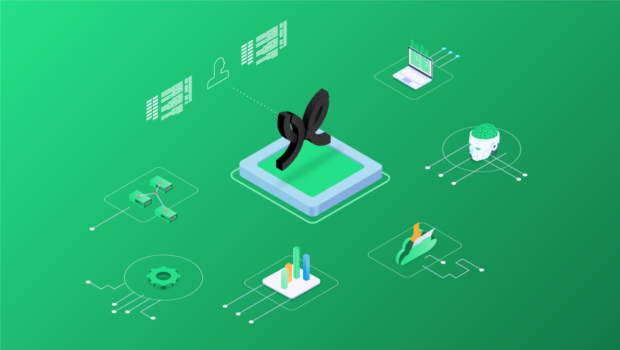AI is a game changer for businesses, promising drastic improvements in growth and efficiency. However, many critical security and compliance aspects are overlooked in the rush to integrate AI into operations. This leads to an increased risk of financial losses from unexpected behavior of AI systems, security breaches, and compliance violations.
Navigating AI’s ocean of complexity is no easy feat. With tightening regulations like the EU AI Act and the need for well-accepted foundational frameworks, executives must take a proactive approach to ensure AI initiatives are secure, ethical, and compliant.
In this post, I’ll explore the inherent security risks associated with AI and the implications of the EU AI Act for your business. My goal is to equip you with the knowledge and strategies to confidently lead your organization into the AI-driven future while mitigating the risks along the way.
The importance of AI governance and GRC
When building AI into business operations, a strategic approach to Governance, Risk Management, and Compliance (GRC) is a must.
Governance is the cornerstone, setting the organizational rules and norms and aligning AI with mission and values to realize efficiencies without overstepping boundaries.
Risk management requires proactive identification and mitigation of potential AI risks early to protect brand reputation and maintain stakeholder trust.
Compliance is equally critical, demanding adherence to evolving regulations like the GDPR and the EU AI Act, embedding legal and ethical considerations into AI projects.
The current state of risk management frameworks and the role of GenAI
The NIST AI Risk Management Framework (AI RMF) provides a blueprint for secure, ethical, and compliant AI systems. However, the current framework only partially considers generative AI (GenAI).
Because of this, the White House issued Executive Order 14110, directing NIST in tandem with other agencies to further develop guidelines and companion standards. As a result, NIST created the U.S. AI Safety Institute, dividing the work of developing this guidance across working groups between public and private sector partnerships. Modus Create is an active contributor to Working Group #1: Risk Management for GenAI through our contributions and relationship to the OWASP top 10 for LLM project.
You shouldn’t ignore GRC simply because a complete risk management framework doesn’t yet exist for all aspects of AI, especially in evolving areas like GenAI. Rather, establishing a foundational GRC program now can provide an advantage over your competitors who have adopted a “wait and see” approach to risk, governance, and compliance concerns. The foundational principles of GRC still offer a solid starting point for navigating the current in-flux landscape while staying adaptable to future developments.
Engaging with existing frameworks like the NIST AI RMF and participating in initiatives under the U.S. AI Safety Institute can signal proactive steps toward understanding and mitigating risks associated with AI technologies. This is important, especially with the increasing velocity of AI advances. It’s also readily apparent when we examine the current member list of NIST AISIC, which covers most of the Fortune 500.
42% of organizations experienced improved data security as a result of their last digital product implementation/overhaul, according to new research on digital transformation and product development.
Understanding the EU AI Act
The EU AI Act is set to establish a global benchmark for AI regulation. Under it, organizations must categorize AI systems based on risk level, from unacceptable to limited, and adhere to numerous regulatory controls. The act was approved by the EU Council on May 21st.
The act aims to protect human rights and ensure that AI applications are safe and reliable across various sectors. It’s a risk-based regulatory framework (not unlike the NIST AI-RMF) that mandates compliance and governance controls for high-risk systems, especially those in the healthcare, transportation, and public sectors. Practices that manipulate human behavior, exploit vulnerabilities, or infringe on privacy or dignity are forbidden.
Melissa Heikkilä further explains in her article for the MIT Technology Review that transparency controls outlined within the act will require AI-generated content (including code) to be labeled so that users are aware when interacting with AI-generated outputs.
Similar to GDPR, US-based businesses that use AI and interact with European markets or handle data of EU citizens could be in scope. Even if they aren’t, this benchmark regulation will probably be the basis for due care of AI systems going forward.
This means that adopting clear communication and GRC strategies must be part of the plan for integrating AI into operations, especially as penalties for violation may be severe.
Proactive steps to mitigate AI security and compliance risks
Navigating the complexities of AI implementation and compliance requires a proactive and transparent approach. It’s important to understand the security risks associated with AI and how the regulatory landscape is developing, particularly with the upcoming EU AI Act.
As I’ve written, cybersecurity threats are constantly evolving, and organizations should prioritize cyber defense strategies to mitigate risk. The alternatives for doing nothing–fines, sanctions, and reputational damage–are too costly.
To learn more about how your organization can strengthen security defenses, get in touch today.
William Reyor
Related Posts
-
In 2024, every business should be aware of these 10 cybersecurity threats
Cybersecurity threats pose a significant risk to safeguarding confidential information, the smooth operation of essential…
-
Digital transformation is more than AI: you still need a customer-focused strategy
From AI and digital strategy to cybersecurity and customer experience, these are the top 5…

